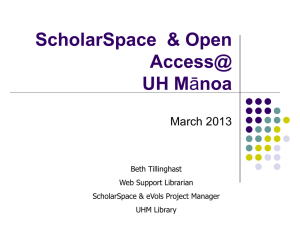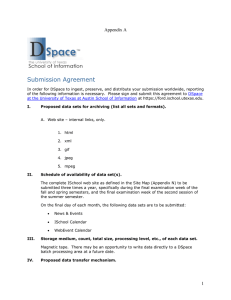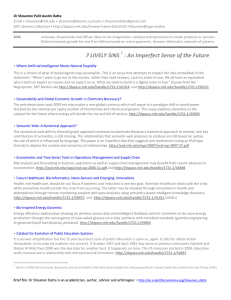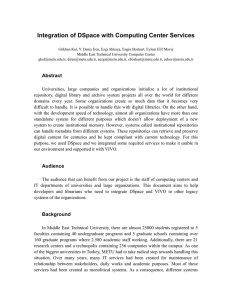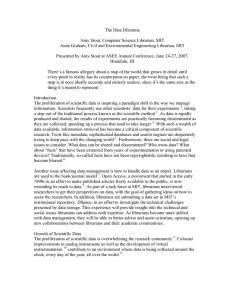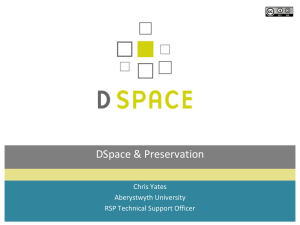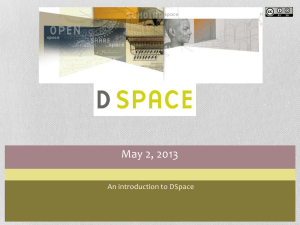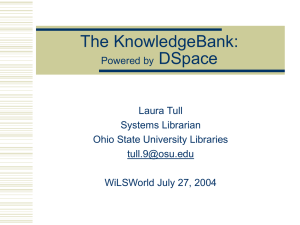Document 11183648
advertisement
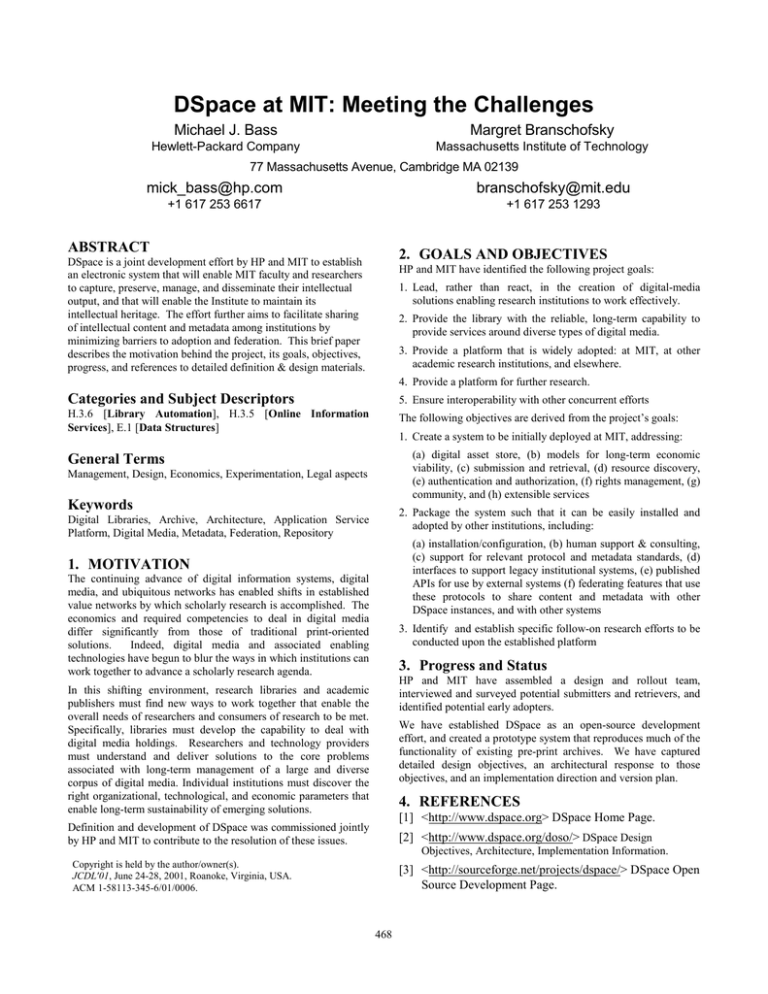
!"#$!%&'()
$+
*$+
,'-' &.(--' ,'-' &.('&)(
ABSTRACT
2. GOALS AND OBJECTIVES
DSpace is a joint development effort by HP and MIT to establish
an electronic system that will enable MIT faculty and researchers
to capture, preserve, manage, and disseminate their intellectual
output, and that will enable the Institute to maintain its
intellectual heritage. The effort further aims to facilitate sharing
of intellectual content and metadata among institutions by
minimizing barriers to adoption and federation. This brief paper
describes the motivation behind the project, its goals, objectives,
progress, and references to detailed definition & design materials.
HP and MIT have identified the following project goals:
1. Lead, rather than react, in the creation of digital-media
solutions enabling research institutions to work effectively.
2. Provide the library with the reliable, long-term capability to
provide services around diverse types of digital media.
3. Provide a platform that is widely adopted: at MIT, at other
academic research institutions, and elsewhere.
4. Provide a platform for further research.
Categories and Subject Descriptors
5. Ensure interoperability with other concurrent efforts
H.3.6 [Library Automation], H.3.5 [Online Information
Services], E.1 [Data Structures]
The following objectives are derived from the project’s goals:
1. Create a system to be initially deployed at MIT, addressing:
(a) digital asset store, (b) models for long-term economic
viability, (c) submission and retrieval, (d) resource discovery,
(e) authentication and authorization, (f) rights management, (g)
community, and (h) extensible services
General Terms
Management, Design, Economics, Experimentation, Legal aspects
Keywords
2. Package the system such that it can be easily installed and
adopted by other institutions, including:
Digital Libraries, Archive, Architecture, Application Service
Platform, Digital Media, Metadata, Federation, Repository
(a) installation/configuration, (b) human support & consulting,
(c) support for relevant protocol and metadata standards, (d)
interfaces to support legacy institutional systems, (e) published
APIs for use by external systems (f) federating features that use
these protocols to share content and metadata with other
DSpace instances, and with other systems
1. MOTIVATION
The continuing advance of digital information systems, digital
media, and ubiquitous networks has enabled shifts in established
value networks by which scholarly research is accomplished. The
economics and required competencies to deal in digital media
differ significantly from those of traditional print-oriented
solutions.
Indeed, digital media and associated enabling
technologies have begun to blur the ways in which institutions can
work together to advance a scholarly research agenda.
3. Identify and establish specific follow-on research efforts to be
conducted upon the established platform
3. Progress and Status
HP and MIT have assembled a design and rollout team,
interviewed and surveyed potential submitters and retrievers, and
identified potential early adopters.
In this shifting environment, research libraries and academic
publishers must find new ways to work together that enable the
overall needs of researchers and consumers of research to be met.
Specifically, libraries must develop the capability to deal with
digital media holdings. Researchers and technology providers
must understand and deliver solutions to the core problems
associated with long-term management of a large and diverse
corpus of digital media. Individual institutions must discover the
right organizational, technological, and economic parameters that
enable long-term sustainability of emerging solutions.
We have established DSpace as an open-source development
effort, and created a prototype system that reproduces much of the
functionality of existing pre-print archives. We have captured
detailed design objectives, an architectural response to those
objectives, and an implementation direction and version plan.
4. REFERENCES
[1] <http://www.dspace.org> DSpace Home Page.
Definition and development of DSpace was commissioned jointly
by HP and MIT to contribute to the resolution of these issues.
[2] <http://www.dspace.org/doso/> DSpace Design
Objectives, Architecture, Implementation Information.
Copyright is held by the author/owner(s).
JCDL'01, June 24-28, 2001, Roanoke, Virginia, USA.
ACM 1-58113-345-6/01/0006.
[3] <http://sourceforge.net/projects/dspace/> DSpace Open
Source Development Page.
468
467
466
